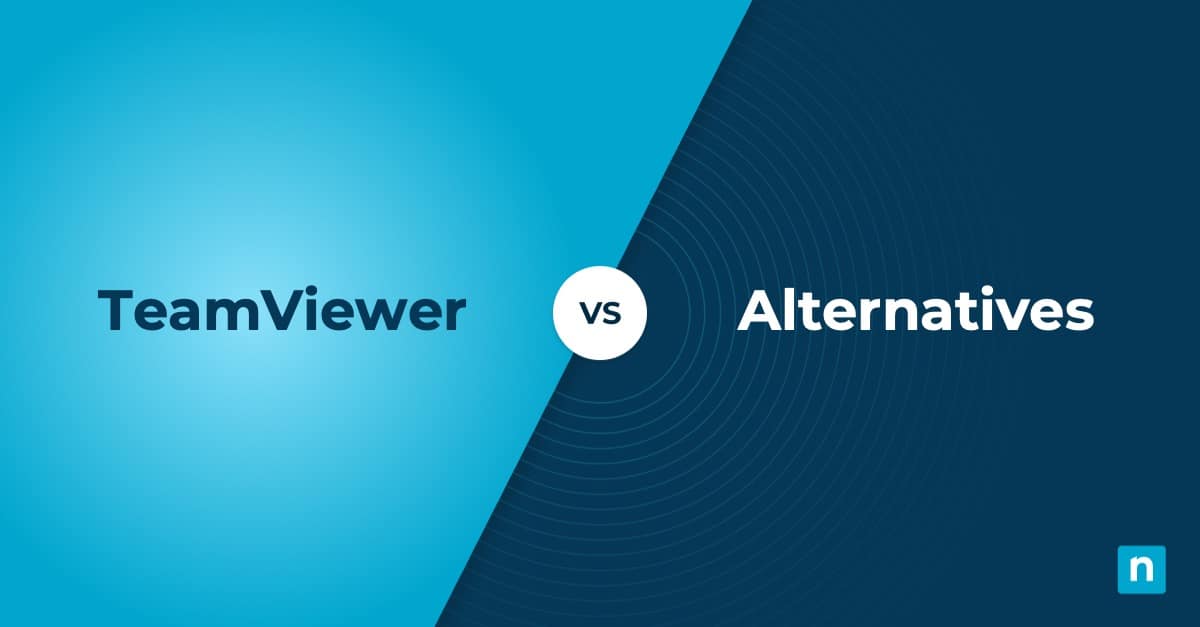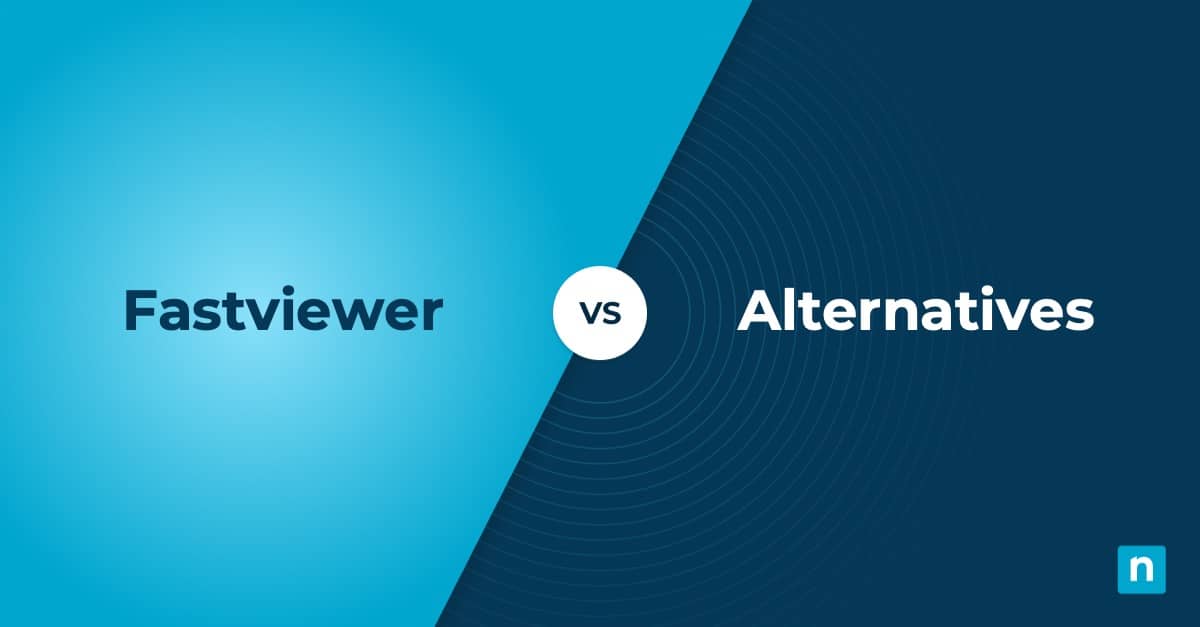Key Points
- Network Inventory Documentation is a system for tracking all network-connected devices, improving troubleshooting, budgeting, and IT efficiency.
- Why It Matters: Speeds up troubleshooting, standardizes processes, enhances visibility, prevents outages, and streamlines onboarding.
- How to Implement: Start with a basic asset list, use discovery tools for real-time visibility, and update regularly to reflect changes.
- Top Tools:
- NinjaOne: Automated IT asset tracking with strong security.
- Auvik: Cloud-based network discovery and monitoring.
- IT Glue: IT documentation with automated network mapping.
- WhatsUp Gold: Real-time performance monitoring and alerts.
- Datadog: Cloud analytics and hybrid IT monitoring.
- ManageEngine OpManager: Network and server monitoring.
- Lansweeper: Automated asset discovery and lifecycle management.
- PRTG: Unified monitoring for IT and IoT environments.
- Zabbix: Open-source, flexible monitoring.
- Dynatrace: AI-powered observability and security.
- Choosing the Right Tool: Consider real-time vs. static tracking, automation, integrations, and scalability.
In this guide, we will explore the best network inventory documentation tools available in the market today.
🥷 NinjaOne simplifies IT asset management and reduces operational costs. Watch a demo.
Table of Contents
-
NinjaOne
-
Auvik
-
IT Glue
-
Progress WhatsUp Gold
-
Datadog
-
ManageEngine OpManager
-
Lansweeper
-
PRTG
-
Zabbix
-
Dynatrace
What is network inventory documentation?
Network inventory documentation is the process of tracking and recording all devices and IT assets that are connected to a network. An accurate network inventory can provide valuable information to assist with many day-to-day processes, such as troubleshooting, management, IT visualization, budgeting, and more.
Why do you need a network inventory documentation tool?
The benefits of proper network documentation are priceless. Imagine starting a new job and needing to understand the network’s current setup. However, you find out that your new job doesn’t have much documentation or any IT plan that describes the current resources and architecture.
How do you know what to do or improve if you don’t even know where you are? It could take you months (if you’re lucky) to draw up plans and optimize your processes. Those months could have been better spent focusing on more strategic projects. And even then, how do you optimize your documentation processes so the next person hired after you doesn’t have to go through the same tedious cycle?
Network inventory management is crucial here. The right network inventory documentation tool can:
- Save you from performing time-consuming research to detect and resolve recurring problems.
- Troubleshoot network issues much faster.
- Help everyone on your team follow the same processes and procedures to achieve consistency in your IT network.
- Prevent losing valuable information when an employee leaves the company.
- Onboard new employees with more knowledge and efficiency.
Importance of network inventory documentation
With IT networks becoming increasingly complex each year, it is crucial that you gain proper visibility into all your network components so that you can maintain your competitive advantage. Network documentation includes all the information you and your IT team need to keep your IT network running smoothly and create more impactful stories for all your stakeholders. In fact, the 2024 Uptime Annual Outage Analysis has found that 74% of outages are due to mission-critical infrastructure failures, with networking issues causing a large portion of IT outages.
You must use the right tools to streamline the documentation process. The 2024 State of the CIO report found that 88% of CIOs said that their role is becoming more digital and innovation-focused, prompting them to look for the right software to support their digital transformation initiatives and ensure the smooth functioning of their network.
How to do network inventory documentation?
To manage your network inventory, you need to have an inventory system set up. A couple of steps that every basic network inventory management system has includes:
1) Set up a network inventory spreadsheet
A network inventory spreadsheet, or list, will give you an idea of what IT assets are currently on your network. You can begin by listing the IT inventory you know is on your network and then searching for additional assets.
2) Find additional network inventory
Large IT infrastructures require active and passive tools to find and identify all the inventory on a network. Active tools automatically scan a network for new inventory, while passive tools monitor the current inventory.
3) Update your network inventory
Your network inventory is always changing. New devices, software, hardware, and other changes to IT assets on the network should be reflected in your network inventory spreadsheet.
As you can see, managing network inventory takes time, especially if you have a large IT infrastructure. Although smaller businesses might get away with using a single spreadsheet for network inventory documentation, medium to large businesses and MSPs require a more efficient and scalable system. Fortunately, there are plenty of network inventory documentation tools that streamline the process, making it quicker and easier.
How to choose your network inventory documentation tool
The two types of tools that are used for network inventory documentation are network monitoring and management tools and IT documentation tools. You can use these tools separately or in unison to gain insight into your network inventory.
While IT documentation tools are static views of imputed information, network monitoring and management tools provide a live view of a network. This live view allows users to see the current network inventory at any time.
Before choosing a network inventory documentation tool, consider how each will benefit your department. If you require a live view of your network, a network monitoring and management tool, such as NinjaOne’s IT asset management software and network management software, is a great option. If your department uses static documentation to manage network inventory, then an IT documentation tool could be the better choice.
10 Best Network Inventory Documentation Tools
All G2 & Capterra scores were taken on January 2025.
1. NinjaOne (⭐️⭐️⭐️⭐️⭐️ 1,728 reviews)
NinjaOne offers powerful IT asset management software that helps you gain complete, accurate, and real-time insight into all your managed IT assets, including Windows servers, workstations, and laptops; macOS workstations and laptops; Linux servers, workstations, and laptops; VMWare and Hyper-V hosts and guests; and SNMP devices (firewalls, switches, routers, etc.). Its platform is ideal for IT enterprises that need live asset data to make a quick decision.
NinjaOne’s software follows all your IT assets through the state of lifecycle management, from requisition to retirement. This ensures that all your endpoints, devices, and non-physical assets are accounted for and maintained at all times.
Strengths of NinjaOne
- Automated IT asset discovery and management using Microsoft Active Directory.
- Proactive strategies on real-time IT asset information so you can make more informed decisions about your IT network.
- Easily find, group, and manage assets so you can apply policies to them.
- Track and be alerted on any asset changes.
- Monitor and manage software at scale.
What users say
Taylor Straley, VP of eCommerce of Decked, shares that the fully integrated NinjaOne platform helped their team become more efficient in months. Its all-in-one endpoint management software solution not only helped them monitor, manage, and secure their Windows, macOS, and Linux endpoints in a single pane of glass, but it also offered an IT asset management tool to help IT teams gain real-time insight into all their managed IT assets.
“Not only does IT operations support us from a growth perspective, but it also just supports us [by] keeping business operations up and running every single day of the year.”
Read more NinjaOne customer stories or check out NinjaOne reviews.
Enjoy peace of mind with accurate, real-time IT asset data. Start your 14-day free trial now.
NinjaOne reviews on G2
| Category | NinjaOne Rating |
| Overall | 4.7 out of 5 (1,728) |
| Has the product been a good partner in doing business? | 9.5 |
| Quality of support | 9.3 |
| Ease of Admin | 9.3 |
| Ease of Use | 9.2 |
Number of 2025 G2 awards: 9
NinjaOne reviews on Capterra
| Category | NinjaOne Rating |
| Overall | 4.8 out of 5 (238) |
| Ease of Use | 4.7 |
| Customer Support | 4.7 |
| Functionality | 4.5 |
| Value for Money | 4.7 |
2. Auvik
Auvik is cloud-based network management software that provides automated network discovery, documentation, and monitoring in an easy-to-use dashboard. All actions are performed on a single dashboard so you can perform multiple actions much more easily. Aside from proactive alerting, it also offers troubleshooting through a centralized Syslog and backup options.
Auvik offers faster detection and reduced downtime by leveraging automation for redundant, time-consuming tasks. This means that IT teams have more time to navigate change confidently and with less friction.
See how Auvik compares with NinjaOne or read a more in-depth analysis of Auvik competitors.
Use cases
- Centralized management. Auvik allows for managing networks from a single dashboard, streamlining IT operations.
- Automatic backup. The platform continuously polls each network device for configuration changes.
- Real-time network mapping and inventory. Auvik also offers clear network topology visualization, providing IT administrators with an overview of their managed networks.
Shortcomings
- Moderate learning curve. Some users said exploring Auvik can be challenging at times, saying that some features can be difficult to find.
- Alerting. Other users said that Tthe platform could improve its Syslog alerting and triggering.
- Support for legacy devices. According to some users, those with legacy equipment may not be able to fully utilize all features
Auvik reviews on G2
| Category | Auvik Rating |
| Overall | 4.5 out of 5 (316) |
| Has the product been a good partner in doing business? | 9.1 |
| Quality of support | 8.9 |
| Ease of Admin | 8.7 |
| Ease of Use | 8.7 |
Number of 2025 G2 awards: 1
Auvik reviews on Capterra
| Category | Auvik Rating |
| Overall | 4.6 out of 5 (76) |
| Ease of Use | 4.4 |
| Customer Support | 4.6 |
| Functionality | 4.5 |
| Value for Money | 4.3 |
3. IT Glue
IT Glue is a cloud-based IT documentation software that helps you easily track, find, and gain insights into your IT network. Its SOC 2-compliant platform offers a specific add-on, Network Glue, an all-in-one automated discovery, documentation, password rotation, and diagramming solution for IT enterprises looking for a reliable network inventory documentation tool.
A Kaseya company, IT Glue is committed to delivering innovative features for IT enterprises worldwide, offering products that enhance service delivery quality while improving operational efficiency.
See how IT Glue compares with NinjaOne or read a more in-depth analysis of IT Glue competitors.
Use cases
- Automated discovery. Network Glue automatically discovers all network devices and Active Directory users, including device vendor and AD roles.
- Documentation. The platform also features documentation for all network devices, including cloud, hybrid, and on-premises.
- Network planning. IT Glue’s Network Glue provides network visibility, enabling proactive strategic network planning by identifying outdated tech.
Shortcomings
- Search function. IT Glue’s search function sometimes narrows its scope unexpectedly, focusing on a specific option rather than a general or organization-wide search.
- Initial learning curve. Other users said learning or becoming familiar with navigating the platform took time.
- Data entry templates. As some users have pointed out, IT Glue’s template formats can be inflexible, saying that pre-defined fields aren’t always ideal for every use case.
IT Glue reviews on G2
| Category | IT Glue Rating |
| Overall | 4.7 out of 5 (578) |
| Has the product been a good partner in doing business? | 9.0 |
| Quality of support | 8.8 |
| Ease of Admin | 9.0 |
| Ease of Use | 9.1 |
Number of 2025 G2 awards: 1
IT Glue reviews on Capterra
| Category | IT Glue Rating |
| Overall | 4.6 out of 5 (276) |
| Ease of Use | 4.6 |
| Customer Support | 4.4 |
| Functionality | 4.5 |
| Value for Money | 4.5 |
4. Progress WhatsUp Gold
WhatsUp Gold is an IT infrastructure monitoring software that enables you to monitor your IT network’s up/down status, availability, and performance in a single console. Its platform provides complete visibility into everything that is connected to your network, including devices, servers, and virtual machines, so that you can diagnose issues faster and with more accuracy.
Its platform also features topology-aware monitoring that understands network dependencies so IT teams can immediately receive alerts for any detected security vulnerability. These alerts can be sent to your team through SMS, email, web, or Slack.
Use cases
- Monitoring. Progress WhatsUp Gold offers availability and performance monitoring, providing visibility into the status and performance of applications, network devices and servers.
- Network mapping. The platform also enables IT administrators to map and visualize network topology.
- Real-time alerting. Progress WhatsUp Gold also has real-time alerting to help maintain optimal network performance and meet SLAs.
Shortcomings
- More suited for experts. Some users mentioned that due to its complexities, Progress WhatsUp Gold is better suited for IT administrators with higher expertise.
- Customization. According to some users, Progress WhatsUp Gold has limited customization options for data export and reporting.
- Support. Other users pointed out that the platform’s service and support could be improved, especially when troubleshooting complex issues.
Progress WhatsUp Gold reviews on G2
| Category | Progress WhatsUp Gold Rating |
| Overall | 4.5 out of 5 (314) |
| Has the product been a good partner in doing business? | 9.0 |
| Quality of support | 8.8 |
| Ease of Admin | 8.2 |
| Ease of Use | 8.5 |
Number of 2025 G2 awards: 1
Progress WhatsUp Gold reviews on Capterra
| Category | Progress WhatsUp Gold Rating |
| Overall | 4.5 out of 5 (225) |
| Ease of Use | 4.2 |
| Customer Support | 4.4 |
| Functionality | 4.4 |
| Value for Money | 4.3 |
5. Datadog
Datadog is a cloud-based monitoring and analytics platform that provides real-time insights into your IT environment. The platform provides metrics, visualizations, and alerting into your cloud or hybrid environments so that you can troubleshoot more effectively.
Its SaaS-based software offers a simple deployment process that requires little maintenance and deep security insights so IT pros can communicate and troubleshoot more effectively. Datadog also helps you track and fulfill audit requirements for over 15 compliance frameworks, including PCI DSS, GDPR, and HIPAA.
Use cases
- Flexible deployment. Datadog features a “deploy anywhere” structure, including on-premises, hybrid, IoT, and multi-cloud environments.
- Integrations. The platform also integrates with vendor-backed third-party tools that can maximize Datadog’s functionalities.
- Search and analytics. Datadog enforces a tag-based search and analytics, making it easier for IT administrators to identify, diagnose, and troubleshoot performance issues.
Shortcomings
- Documentation. Some Datadog users mentioned that documentation could be enhanced by making it less complex and easier to understand.
- Complexities. Other users of the platform said that due to usability challenges, Datadog is more suited for power users.
- Support and service. G2 users have expressed their desire for revamped customer support for a more streamlined troubleshooting experience.
Datadog reviews on G2
| Category | Datadog Rating |
| Overall | 4.3 out of 5 (541) |
| Has the product been a good partner in doing business? | 8.5 |
| Quality of support | 8.3 |
| Ease of Admin | 8.3 |
| Ease of Use | 8.2 |
Number of 2025 G2 awards: 1
Datadog reviews on Capterra
| Category | Datadog Rating |
| Overall | 4.6 out of 5 (302) |
| Ease of Use | 4.2 |
| Customer Support | 4.3 |
| Functionality | 4.5 |
| Value for Money | 4.1 |
6. ManageEngine OpManager
ManageEngine OpManager is a network monitoring solution for devices such as routers, switches, firewalls, wireless LAN controllers, and servers. It is designed to help companies of all sizes anticipate potential outages and proactively address network issues. Specifically, OpManager monitors the performance of any IP-based device and helps businesses remotely visualize their system performance.
It prides itself on being an out-of-the-box solution that enables IT teams to proactively monitor network metrics, such as disk utilization, CPU and memory utilization, and DB count, among others. The platform also helps you continuously monitor your server for availability and response time.
Use cases
- Proactive monitoring. ManageEngine OpManager features proactive monitoring capabilities that can help prevent IT outages and performance degradation.
- Server monitoring. The platform also has server monitoring that can aid in ensuring the availability and enhanced responsiveness of critical business applications and services.
- Virtualization monitoring. ManageEngine OpManager also offers virtualization monitoring, which can help IT administrators gain deep visibility into the performance and health of virtualized environments.
Shortcomings
- Moderate learning curve. Navigating the platform could cause a moderate learning curve, according to some IT solution users.
- Linux and Unix support. Some users said that compared to other inventory documentation tools, ManageEngine OpManager support for Linux and Unix is limited.
- Templates. Other users mentioned that the available templates are basic and often require significant configuration to meet specific monitoring and reporting needs.
ManageEngine OpManager reviews on G2
| Category | ManageEngine OpManager Rating |
| Overall | 4.5 out of 5 (121) |
| Has the product been a good partner in doing business? | 9.1 |
| Quality of support | 8.7 |
| Ease of Admin | 9.1 |
| Ease of Use | 8.8 |
Number of 2025 G2 awards: 0
ManageEngine OpManager reviews on Capterra
| Category | ManageEngine OpManager Rating |
| Overall | 4.6 out of 5 (126) |
| Ease of Use | 4.6 |
| Customer Support | 4.5 |
| Functionality | 4.5 |
| Value for Money | 4.6 |
7. Lansweeper
Lansweeper provides complete visibility into your IT, OT, and IoT assets. This all-in-one solution helps you discover, manage, and optimize all your technology assets to improve efficiency, detect rogue devices, vulnerabilities, and compliance issues, and reveal needless expenses. Lansweeper leverages automation for its asset discovery and inventory processes so that you gain complete control over your IT estate.
The platform is designed to improve efficiency by auto-populating your CMDB, enriching service desk tickets, and tracking your asset’s lifecycle so that you and your IT team can focus on more strategic projects. With Lansweeper’s platform, you can track the health and performance of every endpoint across your entire technology estate.
See how Lansweeper compares with NinjaOne or read a more in-depth analysis of Lansweeper alternatives.
Use cases
- Asset visibility. Lansweeper offers a unified view of IT, OT, and IoT assets, providing complete control over the entire technology estate.
- Risk management. The platform also has proactive risk management features that can help detect vulnerabilities and non-compliance issues in real-time.
- Asset lifecycle management. Lansweeper’s lifecycle management enables efficient planning, procurement, and retirement processes, optimizing IT spending.
Shortcomings
- On-premise reporting. According to some Lansweeper users, generating reports for on-premises deployments can be challenging and require technical expertise.
- Customer support. Some users have also suggested improvements to the responsiveness of customer support.
- UI refinement. Some G2 users say the user interface could be further enhanced to improve intuitiveness and ease of use.
Lansweeper reviews on G2
| Category | Lansweeper Rating |
| Overall | 4.4 out of 5 (57) |
| Has the product been a good partner in doing business? | 9.2 |
| Quality of support | 8.8 |
| Ease of Admin | 9.0 |
| Ease of Use | 8.7 |
Number of 2025 G2 awards: 0
Lansweeper reviews on Capterra
| Category | Lansweeper Rating |
| Overall | 4.5 out of 5 (67) |
| Ease of Use | 4.5 |
| Customer Support | 4.3 |
| Functionality | 4.5 |
| Value for Money | 4.6 |
8. PRTG
PRTG is network monitoring software by Paessler AG. Its unified monitoring tool can monitor almost any object with an IP address and provides information on various aspects of a device, including its uptime, downtime, bandwidth usage, speed, log events, and database requests, among others. PRTG can monitor key infrastructure, such as routers, VPNs, and firewalls, as well as standard protocols like SNMP and Netflow.
The PRTG platform features central monitoring so you can view your entire IT infrastructure in a single pane of glass, with high flexibility and easy scalability for IT, OT, and IoT infrastructures. Clients also benefit from the platform’s integrated support for all important technologies and protocols.
See how PRTG compares with NinjaOne or read a more in-depth analysis of PRTG alternatives.
Use cases
- Central monitoring. PRTG offers a centralized platform that helps IT administrators gain visibility over managed networks through a single dashboard.
- Infrastructure coverage. The platform can also monitor key infrastructure components like routers, VPNs, and firewalls, as well as standard protocols such as SNMP and Netflow.
- Automatic network discovery. PRTG offers automatic discovery of network devices and components for efficient setup and monitoring.
Shortcomings
- On-premise reporting. Some PRTG users said that itsR reporting function for on-premises can be challenging.
- Support and service. Other users suggested improvements to PRTG’s support and service for better issue resolution.
- User-interface. Some G2 users say the user interface could be further enhanced for improved usability.
PRTG reviews on G2
| Category | PRTG Rating |
| Overall | 4.6 out of 5 (91) |
| Has the product been a good partner in doing business? | 8.7 |
| Quality of support | 8.3 |
| Ease of Admin | 8.5 |
| Ease of Use | 8.6 |
Number of 2025 G2 awards: 0
PRTG reviews on Capterra
| Category | PRTG Rating |
| Overall | 4.6 out of 5 (246) |
| Ease of Use | 4.4 |
| Customer Support | 4.2 |
| Functionality | 4.5 |
| Value for Money | 4.4 |
9. Zabbix
Zabbix is an open-sourced distributed monitoring solution that provides insight into several network parameters, such as the health and integrity of servers, virtual machines, applications, services, databases, and websites. Its platform also offers detailed reporting and data visualization features based on stored data.
Because of its universal, open-source structure, Zabbix is scalable to any infrastructure, from smart homes to multi-tenant enterprise environments. It is regularly updated and enhanced to be as flexible and intuitive as possible – so IT teams can monitor whatever they want and easily collect, transform, analyze, and visualize data.
Use cases
- Centralized administration. Zabbix offers a unified monitoring console to simplify IT infrastructure monitoring.
- Flexible deployment. The platform also offers flexible deployment options, adapting to various environments, from small setups to large enterprises.
- Open-source. Zabbix provides a cost-effective and customizable solution due to its open-source nature.
Shortcomings
- Setup challenges. Some users mentioned that the initial setup can be complex for beginner IT professionals, impacting productivity.
- User interface. Others pointed out that Zabbix’s user interface could be improved for better usability and navigation.
- Support. Some Zabbix users also expressed a desire for the platform to improve its user support and service to provide more satisfactory assistance.
Zabbix reviews on G2
| Category | Zabbix Rating |
| Overall | 4.3 out of 5 (190) |
| Has the product been a good partner in doing business? | 8.9 |
| Quality of support | 7.9 |
| Ease of Admin | 7.9 |
| Ease of Use | 7.3 |
Number of 2025 G2 awards: 0
Zabbix reviews on Capterra
| Category | Zabbix Rating |
| Overall | 4.7 out of 5 (93) |
| Ease of Use | 4.0 |
| Customer Support | 4.2 |
| Functionality | 4.5 |
| Value for Money | 4.7 |
10. Dynatrace
Dynatrace is an analytics and automation platform powered by AI to simplify cloud complexity and offer unified observability and security. Its feature-rich monitoring tool features various plugins, the ability to interface with third-party components, and the ability to design and launch a plugin live.
Dynatrace Monitoring’s end-to-end management allows IT teams to discover, track, and remediate real-time vulnerabilities and protect against zero-day attacks. Its automatic and intelligent infrastructure monitoring also offers continuous discovery and visualization of dynamic environments to remove gaps and deliver answers at scale.
Use cases
- Infrastructure observability. Dynatrace provides IT administrators with detailed visibility into infrastructure health and performance.
- Application observability. The platform can also help IT administrators monitor application performance and user experience with end-to-end tracing and root cause analysis.
- Vulnerability protection. Dynatrace also allows for the identification and remediation of vulnerabilities in real-time, protecting against zero-day attacks.
Shortcomings
- Onboarding. According to G2 users, Dynatrace’s initial setup and configuration can be complex, leading to unsatisfactory onboarding experiences.
- Customer support. Some Dynatrace users suggested user support enhancements for better troubleshooting and issue resolution experience.
- Alert inaccuracies. Other users experience occasional false positive alerts and/ warnings, impacting operational efficiency.
Dynatrace reviews on G2
| Category | Dynatrace Rating |
| Overall | 4.5 out of 5 (1,252) |
| Has the product been a good partner in doing business? | 8.7 |
| Quality of support | 8.7 |
| Ease of Admin | 8.2 |
| Ease of Use | 8.3 |
Number of 2025 G2 awards: 2
Dynatrace reviews on Capterra
| Category | Dynatrace Rating |
| Overall | 4.6 out of 5 (56) |
| Ease of Use | 4.3 |
| Customer Support | 4.2 |
| Functionality | 4.4 |
| Value for Money | 4.3 |
Comparison of best network inventory documentation tools (G2)
| Category | NinjaOne | Auvik | IT Glue | Progress WhatsUp Gold | Datadog | ManageEngine OpManager | Lansweeper | PRTG | Zabbix | Dynatrace |
| Overall | 4.8 out of 5 (1,429) | 4.5 out of 5 (316) | 4.7 out of 5 (547) | 4.4 out of 5 (309) | 4.4 out of 5 (530) | 4.5 out of 5 (105) | 4.4 out of 5 (57) | 4.6 out of 5 (89) | 4.3 out of 5 (188) | 4.5 out of 5 (1,247) |
| Ease of Use | 9.6 | 9.1 | 9.0 | 9.0 | 8.5 | 9.1 | 9.2 | 8.7 | 7.9 | 8.7 |
| Customer Service | 9.3 | 8.9 | 8.8 | 8.8 | 8.3 | 8.9 | 8.8 | 8.3 | 7.9 | 8.7 |
| Features | 9.3 | 8.7 | 9.0 | 8.2 | 8.3 | 9.2 | 9.0 | 8.5 | 7.9 | 8.2 |
| Value for Money | 9.2 | 8.7 | 9.1 | 8.5 | 8.2 | 8.8 | 8.7 | 8.6 | 7.3 | 8.3 |
| No. of G2 Awards | 9 | 1 | 1 | 1 | 1 | 0 | 0 | 0 | 0 | 1 |
Comparison of best network inventory documentation tools (Capterra)
| Category | NinjaOne | Auvik | IT Glue | Progress WhatsUp Gold | Datadog | ManageEngine OpManager | Lansweeper | PRTG | Zabbix | Dynatrace |
| Overall | 4.8 out of 5 (228) | 4.6 out of 5 (73) | 4.7 out of 5 (261) | 4.5 out of 5 (223) | 4.6 out of 5 (242) | 4.7 out of 5 (105) | 4.6 out of 5 (62) | 4.6 out of 5 (237) | 4.7 out of 5 (87) | 4.5 out of 5 (52) |
| Ease of Use | 4.7 | 4.4 | 4.5 | 4.2 | 4.3 | 4.5 | 4.5 | 4.5 | 4.0 | 4.3 |
| Customer Support | 4.7 | 4.6 | 4.4 | 4.4 | 4.3 | 4.6 | 4.3 | 4.2 | 4.2 | 4.2 |
| Functionality | 4.6 | 4.5 | 4.5 | 4.4 | 4.5 | 4.5 | 4.5 | 4.5 | 4.5 | 4.4 |
| Value for Money | 4.7 | 4.3 | 4.5 | 4.3 | 4.1 | 4.6 | 4.6 | 4.3 | 4.7 | 4.3 |
Final scores and summaries of best network inventory documentation tools
| Vendor | Final Score | Summary |
| NinjaOne | 4.471 | NinjaOne is a trusted software that gives you real-time information about your IT network. This helps you make a more informed decision about any business process. |
| Dynatrace | 3.161 | Dynatrace is a robust platform that unifies end-to-end observability and analytics to improve operational efficiency and reduce security vulnerabilities. |
| IT Glue | 2.173 | IT Glue is mostly used by SMBs that are looking for up-to-date access to their documentation, credentials, and configuration information. |
| Datadog | 2.141 | Datadog is used by mid-market IT enterprises that are looking for a straightforward monitoring solution for their IT environment. |
| Progress WhatsUp Gold | 1.538 | WhatsUp Gold delivers insightful context into your IT network so that you can easily find the root cause of an issue and solve it much faster. |
| Auvik | 1.239 | Auvik is a reliable tool to view all of your network elements in a secure, centralized location. |
| PRTG | 1.227 | PRTG is a robust monitoring platform used by mid-market to larger IT enterprises. Its tool is used for more complex IT, OT, and IoT infrastructures. |
| Zabbix | 1.016 | Zabbix is an all-in-one monitor solution that helps users collect, store, manage, and analyze information about their IT infrastructure. |
| ManageEngine OpManager | 0.949 | OpManager is a trusted network monitoring tool that has helped many small enterprises identify network issues and improve their performance for the last 15 years. |
| Lansweeper | 0.783 | Lansweeper is used by larger organizations that are looking for a robust platform that provides users with the information they need about their IT network. |
Our rankings formula
To derive the final score for each vendor, we employed a weighted formula that takes into account various metrics. Here’s how it breaks down:
Final Score = w1 * G2 Overall Star Rating + w2 * Capterra Overall Star Rating + w3 * G2 Total Number of Reviews (Scaled) + w4 * Capterra Total Number of Reviews (Scaled) + w5 * G2 Total Number of Awards
Where:
W1 = .25 * G2 score
W2 = .25 * Capterra score
W3 = .2 * Number of G2 reviews
W4 = .2 * Number of Capterra reviews
W5 = .1 * Number of G2 awards








